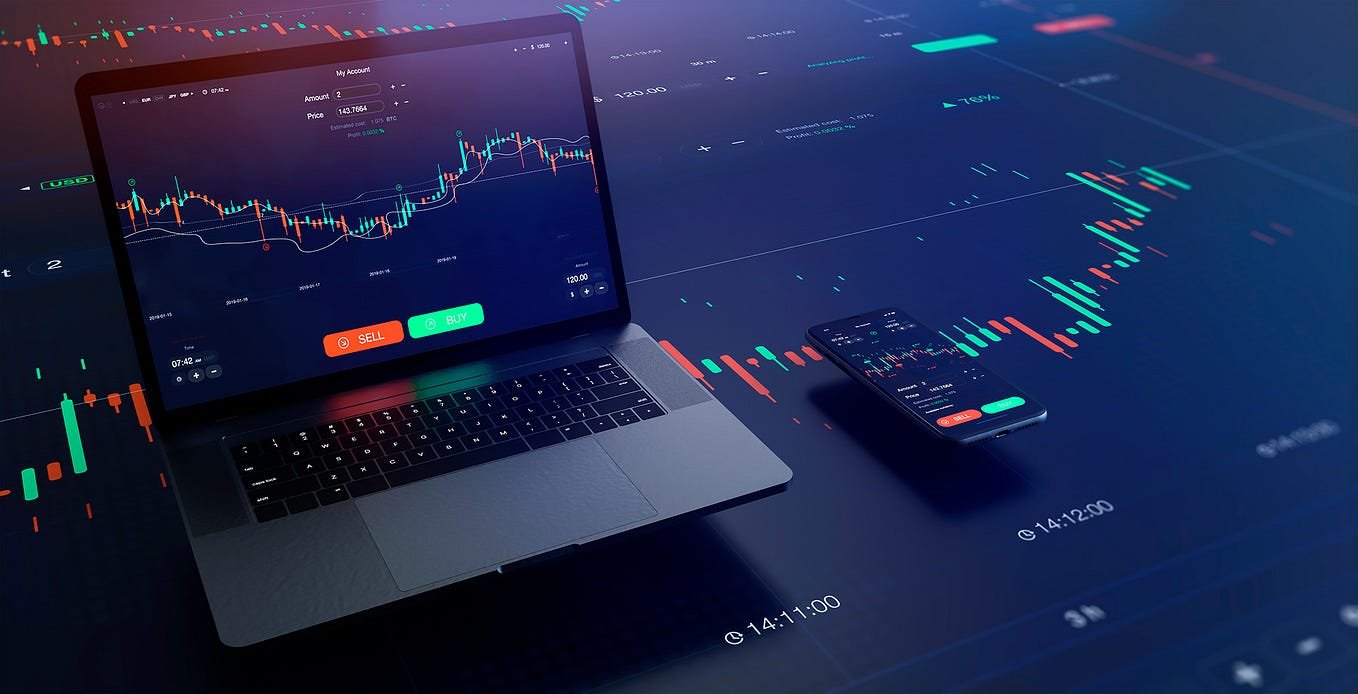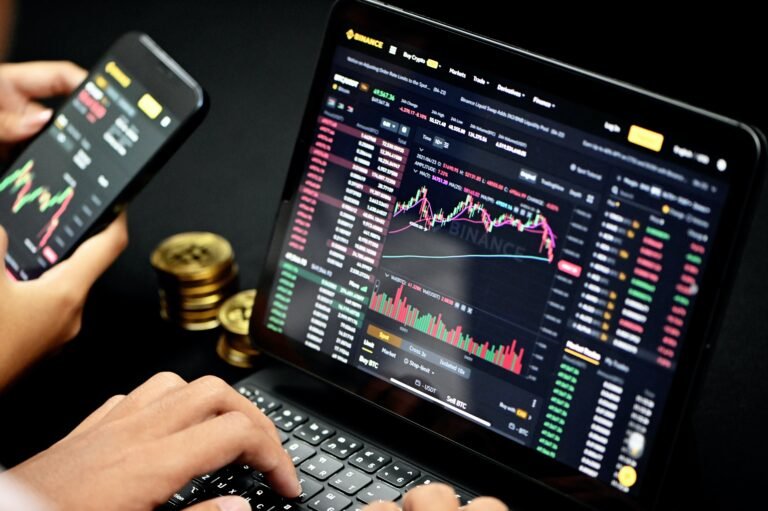In the rapidly evolving world of digital assets, choosing the right trading platform can make or break your cryptocurrency investment journey. With hundreds of exchanges competing for your attention, comprehensive cryptocurrency trading platform comparison reviews have become essential for both novice and experienced traders.
Whether you’re a day trader executing multiple transactions daily or a long-term investor looking to dollar-cost average into Bitcoin and Ethereum, the platform you choose will directly impact your profitability and overall trading experience. This comprehensive guide provides detailed cryptocurrency trading platform comparison reviews, analyzing everything from trading fees and security protocols to user interface design and customer support quality.
Why Cryptocurrency Trading Platform Comparison Reviews Matter
The cryptocurrency ecosystem has experienced explosive growth, with trading volumes reaching unprecedented levels. However, this growth has also led to an oversaturated market where distinguishing between legitimate, high-quality platforms and subpar alternatives has become increasingly challenging. Professional cryptocurrency trading platform comparison reviews serve as your roadmap through this complex landscape.
Recent market events have highlighted the critical importance of platform selection. The collapse of several major exchanges has taught investors that not all platforms are created equal. Security breaches, liquidity issues, and regulatory compliance failures can result in significant financial losses. This reality makes thorough platform evaluation more crucial than ever.
When conducting Cryptocurrency Trading Platform Comparison Reviews, experts evaluate multiple factors that directly impact your trading success. These include trading fees, which can significantly erode profits over time, security measures that protect your digital assets, and the availability of trading pairs that determine your investment options. Additionally, factors like user interface design, mobile app functionality, and customer support quality all contribute to your overall trading experience.
Essential Factors in Cryptocurrency Trading Platform Comparison Reviews
Security and Regulatory Compliance
Security stands as the most critical factor in any Cryptocurrency Trading Platform Comparison Reviewsevaluation. Top-tier platforms implement multiple layers of protection, including cold storage for the majority of user funds, two-factor authentication, and advanced encryption protocols. Regulatory compliance adds another layer of security, as licensed platforms must adhere to strict operational standards.
When examining security in cryptocurrency trading platform comparison reviews, look for platforms that store 95% or more of user funds in offline cold storage. This practice significantly reduces the risk of theft from online attacks. Additionally, insurance coverage for digital assets provides an extra safety net, though few platforms offer comprehensive coverage.
Regulatory compliance varies significantly across jurisdictions. In the United States, platforms should be registered with FinCEN and comply with state-specific money transmission laws. European platforms benefit from MiCA regulation, while other regions have their own regulatory frameworks. Licensed platforms typically offer greater consumer protection and are less likely to face sudden regulatory shutdowns.
Trading Fees and Cost Structure
Fee structures can dramatically impact your trading profitability, making cost analysis a crucial component of cryptocurrency trading platform comparison reviews. Most platforms employ a maker-taker fee model, where makers (those who add liquidity to the order book) pay lower fees than takers (those who remove liquidity).
Typical trading fees range from 0.1% to 0.5% per transaction, but these can vary based on your trading volume and account type. High-volume traders often benefit from tiered fee structures that reduce costs as trading volume increases. Some platforms also offer fee discounts for users who hold their native tokens.
Beyond trading fees, consider deposit and withdrawal costs. While cryptocurrency deposits are typically free, fiat deposits may incur fees, especially for credit card transactions. Withdrawal fees vary significantly between platforms and can range from fixed amounts to percentage-based charges.
Available Trading Pairs and Liquidity
The breadth of available trading pairs determines your investment flexibility. Leading platforms offer hundreds of trading pairs, including major cryptocurrencies like Bitcoin, Ethereum, and established altcoins, as well as newer projects and decentralized finance (DeFi) tokens.
Liquidity plays a crucial role in executing trades efficiently. High liquidity ensures that large orders can be filled quickly without significantly impacting the market price. Platforms with deeper order books provide better price discovery and reduced slippage for traders.
When reviewing trading pairs in Cryptocurrency Trading Platform Comparison Reviews, consider both spot trading and derivatives options. Some platforms specialize in spot trading, while others offer futures, options, and other derivative products that enable advanced trading strategies.
Top Cryptocurrency Trading Platforms Detailed Comparison Reviews

Tier 1 Platforms: Industry Leaders
The cryptocurrency trading industry is dominated by several major platforms that have established themselves as industry leaders through years of reliable service, robust security measures, and comprehensive feature sets. These platforms typically handle billions of dollars in daily trading volume and serve millions of users worldwide.
Leading platforms in this tier offer extensive cryptocurrency selections, often supporting over 200 different digital assets. They provide advanced trading tools including spot trading, futures, options, and margin trading capabilities. Security measures are institutional-grade, with most platforms maintaining insurance policies and storing the vast majority of user funds in offline cold storage.
Customer support for tier 1 platforms typically includes 24/7 live chat, comprehensive help centers, and dedicated account managers for high-volume traders. Mobile applications are sophisticated and mirror desktop functionality, allowing traders to manage their portfolios effectively from anywhere.
Mid-Tier Platforms: Balanced Options
Mid-tier cryptocurrency trading platforms offer compelling alternatives for traders seeking quality services without the complexity often associated with industry giants. These platforms typically focus on specific market segments or geographic regions, allowing them to provide more personalized services.
Many mid-tier platforms excel in particular areas such as user experience, customer support, or specialized trading features. They often provide more competitive fee structures for retail traders and may offer unique features not available on larger platforms.
Security standards among reputable mid-tier platforms remain high, though they may not have the same level of insurance coverage as industry leaders. However, their smaller user bases can sometimes result in more responsive customer service and faster implementation of new features.
Specialized Platforms: Niche Market Leaders
Specialized Cryptocurrency Trading Platform Comparison Reviews to specific trader needs, such as decentralized finance (DeFi) integration, privacy-focused trading, or institutional services. These platforms often provide features unavailable elsewhere, making them valuable options for specific use cases.
DeFi-focused platforms integrate directly with decentralized protocols, allowing users to participate in yield farming, liquidity provision, and other DeFi activities alongside traditional trading. Privacy-focused platforms implement enhanced anonymity features, though they must balance privacy with regulatory compliance requirements.
Institutional platforms cater to large-scale traders, offering features like over-the-counter (OTC) trading desks, advanced order types, and dedicated relationship managers. These platforms typically require higher minimum deposits but provide services tailored to professional trading needs.
Regional Considerations in Cryptocurrency Trading Platform Reviews
North American Platforms
North American cryptocurrency trading platforms operate under some of the world’s most stringent regulatory frameworks. United States-based platforms must comply with federal regulations from agencies like the SEC and CFTC, as well as state-level money transmission laws.
Canadian platforms benefit from clearer regulatory guidance, with several receiving full regulatory approval as securities dealers. This regulatory clarity has enabled Canadian platforms to offer a broader range of services, including interest-bearing accounts and staking services.
Mexican and other Latin American markets are experiencing rapid growth, with several regional platforms emerging to serve local needs. These platforms often provide better support for local payment methods and currencies, making them attractive options for regional traders.
European Platform Landscape
European cryptocurrency trading platforms operate under the Markets in Crypto-Assets (MiCA) regulation, which provides comprehensive regulatory framework across the European Union. This regulation enhances consumer protection and creates standardized operational requirements.
Several European platforms have achieved significant market share by focusing on user experience and regulatory compliance. They often provide excellent support for European payment methods, including SEPA transfers and local banking integrations.
The United Kingdom’s post-Brexit regulatory approach has created a unique environment for cryptocurrency platforms. UK-based platforms must register with the Financial Conduct Authority (FCA) and comply with specific anti-money laundering requirements.
Asian Market Dynamics
Asian cryptocurrency trading platforms represent some of the largest and most innovative exchanges globally. However, regulatory environments vary dramatically across the region, from supportive frameworks in Singapore and Japan to restrictive policies in China.
Japanese platforms operate under comprehensive regulatory oversight that has created some of the world’s most secure and compliant Cryptocurrency Trading Platform Comparison Reviews. These platforms often serve as models for regulatory best practices globally.
Singapore has emerged as a major cryptocurrency hub, with several global platforms establishing their headquarters there. The city-state’s progressive regulatory approach has attracted significant investment and innovation in the cryptocurrency trading space.
Advanced Trading Features Comparison
Order Types and Trading Tools
Modern cryptocurrency trading platforms offer sophisticated order types that enable precise trade execution and risk management. Beyond basic market and limit orders, advanced platforms provide stop-loss orders, take-profit orders, and more complex conditional orders.
Algorithmic trading tools have become increasingly important for serious traders. Some platforms offer built-in algorithmic trading capabilities, while others provide API access for custom trading bot development. These features can significantly enhance trading efficiency and profitability.
Technical analysis tools vary widely between platforms. The best platforms provide comprehensive charting packages with dozens of technical indicators, drawing tools, and customizable interfaces. Integration with popular charting software like TradingView has become a standard feature among leading platforms.
Margin Trading and Derivatives
Margin trading capabilities allow traders to amplify their positions using borrowed funds, potentially increasing both profits and losses. Platform-specific leverage limits, liquidation mechanisms, and margin requirements vary significantly and directly impact trading strategies.
Futures trading has become increasingly popular, with many platforms offering perpetual contracts and fixed-date futures. These instruments allow traders to speculate on price movements without holding the underlying assets, providing additional flexibility in trading strategies.
Options trading, while less common, is available on select platforms and provides sophisticated risk management and speculation opportunities. These complex instruments require thorough understanding and are typically suited for experienced traders.
Mobile Trading Experience
Mobile trading has transitioned from a convenience feature to an essential platform component. The best cryptocurrency trading platforms provide mobile applications that mirror desktop functionality while optimizing for touch-based interfaces.
Mobile-specific features like price alerts, biometric authentication, and push notifications enhance the trading experience. Some platforms offer mobile-exclusive features such as simplified buying interfaces for casual investors.
Cross-platform synchronization ensures that charts, watchlists, and trading preferences remain consistent between desktop and mobile applications. This seamless experience is crucial for traders who need to monitor markets and execute trades throughout the day.
Security Analysis in Trading Platform Reviews
Cold Storage and Fund Protection
Leading Cryptocurrency Trading Platform Comparison Reviews user fund security through comprehensive cold storage implementations. The industry standard involves storing 95% or more of user funds in offline storage systems that are disconnected from internet-accessible networks.
Multi-signature wallet technology adds additional security layers by requiring multiple cryptographic signatures to authorize transactions. This approach prevents single points of failure and reduces the risk of unauthorized fund access.
Insurance coverage provides additional protection for user funds, though coverage terms and limits vary significantly between platforms. Some platforms maintain their own insurance funds, while others purchase third-party coverage from traditional insurance companies.
Authentication and Account Security
Two-factor authentication (2FA) has become a standard security requirement across reputable cryptocurrency trading platforms. Most platforms support multiple 2FA methods, including SMS, authenticator apps, and hardware security keys.
Advanced platforms implement additional security measures such as withdrawal whitelisting, which restricts fund withdrawals to pre-approved addresses. This feature provides an extra layer of protection against unauthorized access.
Account monitoring systems track user behavior patterns and flag suspicious activities. These systems can detect unusual login locations, abnormal trading patterns, and potential account compromise attempts.
Regulatory Compliance and Transparency
Know Your Customer (KYC) and Anti-Money Laundering (AML) compliance demonstrates platform commitment to regulatory standards. While these requirements may seem burdensome, they indicate that platforms operate under proper oversight and maintain necessary legal protections.
Regular security audits by independent third-party firms provide transparency into platform security practices. The best platforms publish audit results and maintain open communication about their security measures.
Financial transparency, including proof of reserves and regular financial reporting, helps users assess platform stability and trustworthiness. Some platforms provide real-time proof of reserves, allowing users to verify that the platform maintains sufficient funds to meet withdrawal obligations.
User Experience and Interface Design
Desktop Trading Interfaces
Professional trading interfaces must balance functionality with usability. The best platforms provide customizable layouts that allow traders to arrange charts, order books, and trading tools according to their preferences.
Real-time data feeds ensure that traders have access to current market information. Delayed or inaccurate data can result in poor trading decisions and missed opportunities. Leading platforms invest heavily in data infrastructure to provide millisecond-level updates.
Integration with external tools and services enhances platform utility. This includes portfolio management tools, tax reporting software, and third-party analysis platforms. API access enables traders to build custom integrations and automated trading systems.
Mobile Application Quality
Mobile trading applications must provide core functionality while optimizing for smaller screens and touch interfaces. The best mobile apps offer full trading capabilities, including advanced order types and chart analysis tools.
Offline functionality ensures that users can access account information and price data even with limited internet connectivity. While live trading requires internet access, basic portfolio viewing and historical data access can remain available offline.
Push notification systems keep traders informed of important market movements and account activities. Customizable alert systems allow users to monitor specific price levels, trading opportunities, and account events.
Fee Structure Deep Dive
Trading Fee Comparison
Trading fees represent the most significant ongoing cost for active cryptocurrency traders. Fee structures vary dramatically between platforms, with some charging flat percentages while others implement complex tiered systems based on trading volume.
Maker-taker fee models incentivize liquidity provision by charging lower fees to traders who add liquidity to the order book. This system benefits the overall market by encouraging deeper order books and tighter bid-ask spreads.
Volume-based fee tiers reward high-volume traders with reduced fees. These systems can result in significant cost savings for active traders, but the volume requirements and fee reductions vary substantially between platforms.
Hidden Costs and Additional Fees
Beyond basic trading fees, platforms may charge additional fees for various services. Deposit fees can apply to fiat currency deposits, particularly for credit card transactions. These fees can range from 1% to 5% of the deposit amount.
Withdrawal fees vary based on the currency and withdrawal method. Cryptocurrency Trading Platform Comparison Reviews incur network fees, while fiat withdrawals may include bank transfer fees or payment processor charges. Inactivity fees are becoming more common as platforms seek to encourage active trading. These fees typically apply to accounts that remain dormant for extended periods, usually six months to a year.
Customer Support and Educational Resources
Support Channel Analysis
Customer support quality varies dramatically across cryptocurrency trading platforms. The best platforms provide multiple support channels, including live chat, email, and phone support. Response times and resolution quality are critical factors in platform evaluation.
24/7 support availability is essential given cryptocurrency markets’ round-the-clock nature. Traders need assistance at all hours, particularly during periods of high market volatility when technical issues can result in significant financial losses.
Multilingual support capabilities enable platforms to serve global user bases effectively. This includes not only customer service in multiple languages but also platform interfaces and educational materials translated for different markets.
Educational Content Quality
Comprehensive educational resources help traders improve their skills and make better investment decisions. The best platforms provide educational content ranging from beginner guides to advanced trading strategies.mVideo tutorials, webinars, and interactive courses provide engaging learning experiences.
These resources should cover platform-specific features as well as general cryptocurrency and trading education. Market analysis and research reports add significant value for traders seeking professional insights. Some platforms employ dedicated research teams that provide regular market commentary and analysis.
Technology and Innovation Comparison

Trading Engine Performance
Trading engine performance directly impacts execution quality and user experience. High-performance engines can process thousands of orders per second while maintaining low latency for order execution. System uptime and reliability are crucial during periods of high market activity.
The best platforms maintain 99.9% uptime and have robust systems that can handle traffic surges during major market events. API quality and documentation enable algorithmic trading and third-party integrations. Well-designed APIs provide comprehensive functionality with clear documentation and reliable performance.
Innovation and Feature Development
Leading platforms continuously innovate to provide new features and services. This includes integration with emerging technologies like decentralized finance (DeFi) protocols and non-fungible token (NFT) marketplaces. Advanced trading features such as copy trading, social trading, and automated portfolio rebalancing are becoming more common.
These features can help less experienced traders benefit from expert strategies. Integration with traditional financial services, such as debit cards and investment accounts, helps bridge the gap between cryptocurrency and traditional finance. These integrations make cryptocurrency trading more accessible to mainstream users.
Regional Platform Advantages
Localized Payment Methods
Regional cryptocurrency trading platforms often excel in providing localized payment methods that global platforms may not support. This includes bank transfers, mobile money services, and local payment processors that are popular in specific regions. Currency support extends beyond major fiat currencies to include local currencies that may not be available on international platforms.
This support can reduce conversion costs and simplify the trading process for local users. Regulatory alignment with local laws ensures that platforms can operate legally and provide services without interruption. Local platforms often have better relationships with regulators and can navigate local compliance requirements more effectively.
Cultural and Language Considerations
User interfaces designed for specific cultural preferences can significantly improve user experience. This includes layout preferences, color schemes, and navigation patterns that align with local user expectations. Customer support in local languages and time zones provides better service quality.
Local support teams understand cultural nuances and can provide more effective assistance. Community building through local events, educational programs, and partnerships helps platforms establish stronger relationships with their user bases. These efforts contribute to higher user satisfaction and retention rates.
Also Read: Bitcoin Lending Platform Comparison Best Crypto Lending Solutions 2025
Security Best Practices Across Platforms
Personal Security Measures
Regardless of platform choice, users must implement personal security measures to protect their accounts and funds. This includes using strong, unique passwords and enabling all available security features. Hardware wallet integration allows users to maintain control of their private keys while still benefiting from platform trading capabilities.
This approach provides the highest level of security for long-term cryptocurrency storage. Regular security audits of personal practices, including review of active sessions, connected applications, and account permissions, help maintain account security over time.
Platform Security Evaluation
When conducting cryptocurrency trading platform comparison reviews, security evaluation should include assessment of historical security incidents and platform responses. How platforms handle security breaches reveals important information about their commitment to user protection. Third-party security audits provide independent verification of platform security measures.
The best platforms undergo regular audits by reputable cybersecurity firms and publish audit results for transparency. Bug bounty programs demonstrate platform commitment to continuous security improvement. These programs incentivize security researchers to identify and report vulnerabilities before they can be exploited maliciously.
Future Trends in Cryptocurrency Trading Platforms

Emerging Technologies
Artificial intelligence and machine learning are increasingly being integrated into Cryptocurrency Trading Platform Comparison Reviews. These technologies enable better fraud detection, personalized user experiences, and automated trading assistance. Blockchain technology improvements, including layer-2 scaling solutions, are enabling faster and cheaper transactions.
Platforms that integrate these technologies can offer improved user experiences and reduced costs. Decentralized exchange integration is becoming more common as platforms seek to provide access to the broader DeFi ecosystem. This integration allows users to access decentralized trading opportunities while benefiting from centralized platform convenience.
Regulatory Evolution
Global regulatory frameworks for cryptocurrency trading continue to evolve. Platforms that proactively adapt to regulatory changes are better positioned for long-term success and user protection. Central bank digital currencies (CBDCs) may significantly impact cryptocurrency trading platforms as governments implement their own digital currencies.
Platforms that support CBDC integration will likely gain competitive advantages. Environmental sustainability concerns are driving innovation in energy-efficient blockchain technologies. Platforms that support proof-of-stake networks and implement carbon-neutral operations are becoming more attractive to environmentally conscious traders.
Making Your Platform Selection Decision
Assessment Framework
Developing a systematic approach to cryptocurrency trading platform comparison reviews ensures that you evaluate all relevant factors objectively. Create a weighted scoring system that reflects your specific trading priorities and requirements. Consider your trading frequency, investment timeline, and technical expertise when evaluating platforms.
Day traders require different features than long-term investors, and platforms excel in different areas. Test platform functionality through demo accounts or small initial deposits before committing significant funds. This hands-on evaluation provides insights that theoretical comparisons cannot capture.
Risk Management Considerations
Diversification across multiple platforms can reduce concentration risk, though it also increases complexity. Consider maintaining accounts on multiple platforms to ensure continued access to trading services. Regular platform evaluation ensures that your chosen platform continues to meet your evolving needs.
The cryptocurrency trading landscape changes rapidly, and platform capabilities evolve constantly. Exit strategy planning includes understanding withdrawal processes, timeframes, and potential limitations. Ensure that you can access your funds quickly if needed, particularly during market stress periods.
Conclusion
Selecting the right cryptocurrency trading platform requires careful consideration of multiple factors, from security and fees to user experience and available features. This comprehensive analysis of cryptocurrency trading platform comparison reviews provides the framework needed to make an informed decision that aligns with your specific trading goals and risk tolerance.
The cryptocurrency trading landscape continues to evolve rapidly, with new platforms emerging and existing platforms enhancing their offerings. Regular evaluation of platform options ensures that you continue to benefit from the best available services and features.
Remember that no single platform excels in every category, and the best choice depends on your individual needs and priorities. Whether you prioritize low fees, advanced trading tools, or exceptional security measures, there’s likely a platform that matches your requirements.
Start your platform selection process by clearly defining your trading goals and requirements. Then use these cryptocurrency trading platform comparison reviews as a guide to evaluate your options systematically. Consider testing multiple platforms with small amounts before making your final decision.


